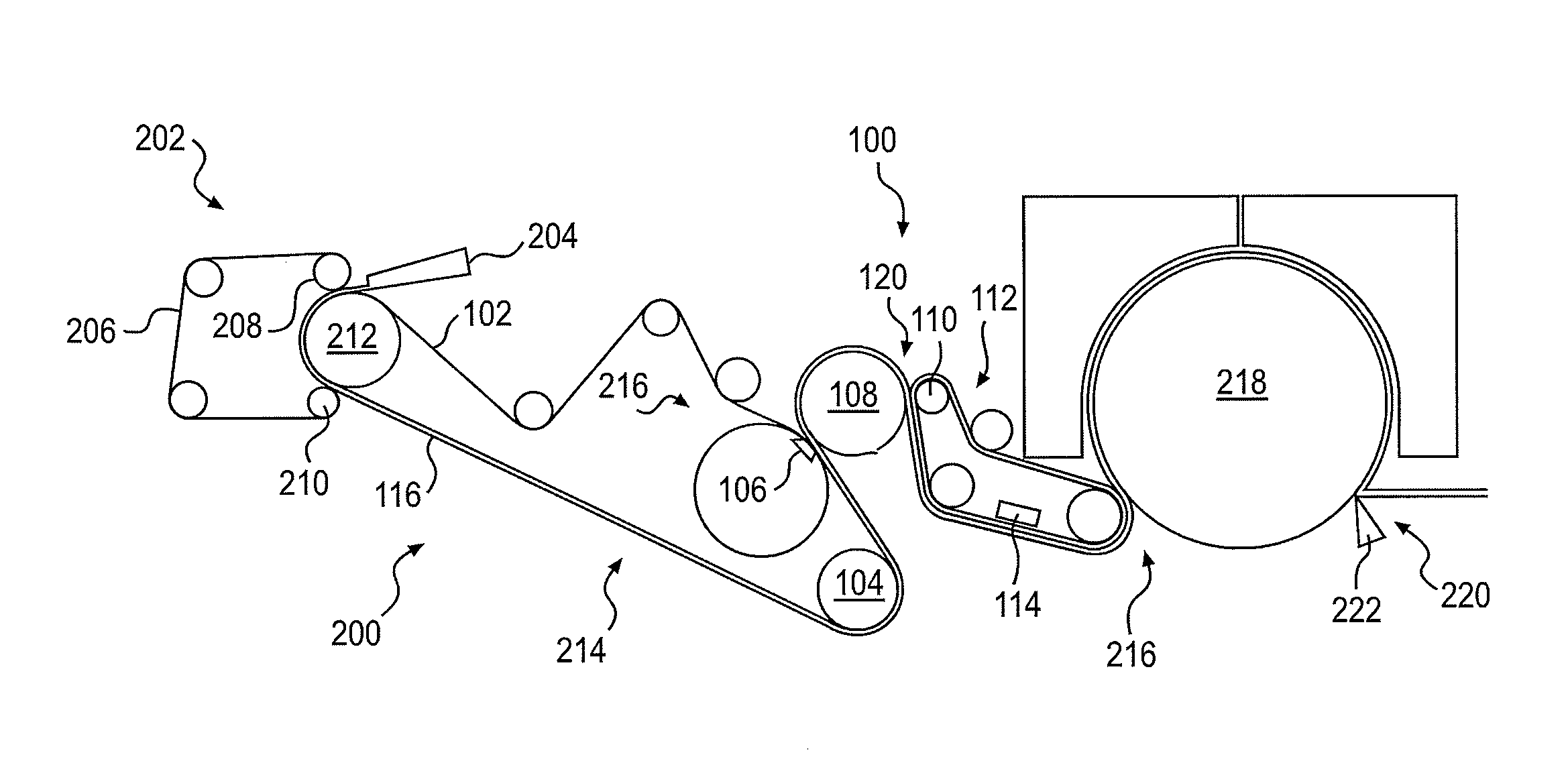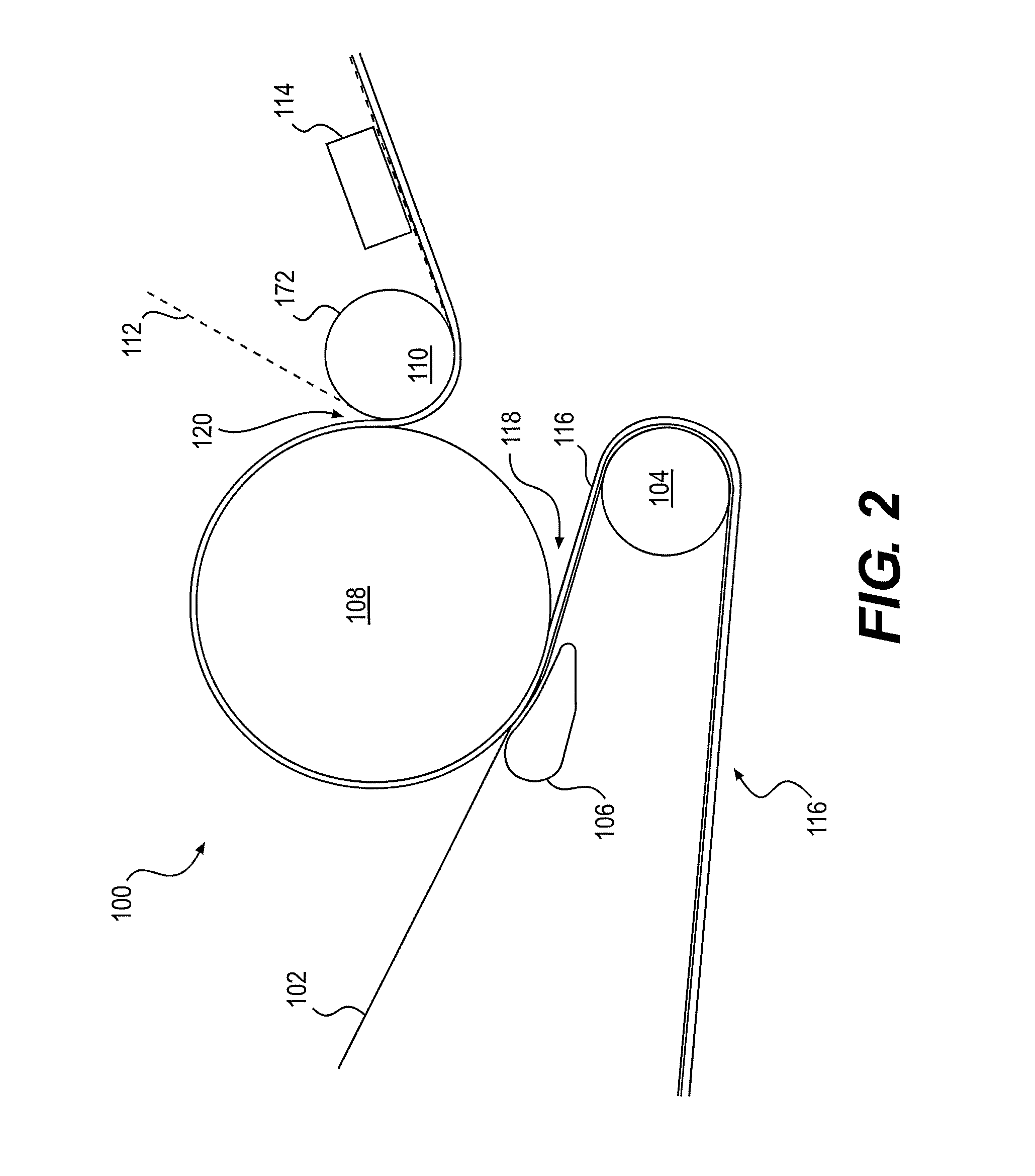Multilayer belt for creping and structuring in a tissue making process
a tissue making process and multi-layer belt technology, applied in the field of multi-layer belts for cr, can solve the problems of limited variety of openings that can be constructed, limit the maximum size and possible shapes, and limit the types of tissue making web shaping that can be achieved when using woven structuring fabrics
- Summary
- Abstract
- Description
- Claims
- Application Information
AI Technical Summary
Benefits of technology
Problems solved by technology
Method used
Image
Examples
Embodiment Construction
[0028]Described herein are embodiments of a belt that can be used in tissue making processes. In particular, the belt can be used to impart a texture or structure to a tissue or towel web, either in a TAD, eTAD, ATMOS, or NTT process or belt creping process, with the belt having a multilayer construction.
[0029]The term “Tissue or towel” as used herein encompasses any tissue or towel product having cellulose as a major constituent. This would include, for example, products marketed as paper towels, toilet paper, facial tissues, etc. Furnishes used to produce these products can include virgin pulps or recycle (secondary) cellulosic fibers, or fiber mixes comprising cellulosic fibers. Wood fibers include, for example, those obtained from deciduous and coniferous trees, including softwood fibers, such as northern and southern softwood kraft fibers, and hardwood fibers, such as eucalyptus, maple, birch, aspen, or the like. “Furnishes” and like terminology refers to aqueous compositions i...
PUM
 Login to View More
Login to View More Abstract
Description
Claims
Application Information
 Login to View More
Login to View More - R&D
- Intellectual Property
- Life Sciences
- Materials
- Tech Scout
- Unparalleled Data Quality
- Higher Quality Content
- 60% Fewer Hallucinations
Browse by: Latest US Patents, China's latest patents, Technical Efficacy Thesaurus, Application Domain, Technology Topic, Popular Technical Reports.
© 2025 PatSnap. All rights reserved.Legal|Privacy policy|Modern Slavery Act Transparency Statement|Sitemap|About US| Contact US: help@patsnap.com



